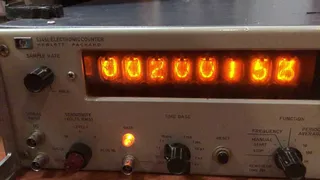PAL-1 Enclosure
Description
PDFThis is a case for the most excellent KIM-1 recreation, the PAL-1 kit from Liu Ganning that you will find here on Tindie.
If you like this and want to incentivize me to make more, consider a donation.
Print Settings
Printer Brand:
Creality
Printer:
Ender 3
Rafts:
No
Supports:
Yes
Resolution:
0.2mm
Infill:
30%
Filament: Your favourite filament brand PLA
Red and white
Notes:
Print the shells with the cavity down, using tree supports (because of the large area and the small details, regular supports are too dense, stick to the shell, and are very difficult to remove).
You may want to add pads on the four corners to avoid warping. These shells are large and take a long time to print.
If you want to experiment with two-tone printing, print the keyboard legends first, then while keeping the bed hot between jobs, change filament and print the keys. The models (keys and legends) are the same dimensions and should center at the exact same spot. It’s really difficult, and you will fail again and again, but the result is worth it (I think). You could also print the keys upright (with supports) and use paint to fill the cavities.
For the PAL-1 letters on the top shell, I just printed the letters with a slight negative offset and press-fit them in the case (a bit of brute force on a flat surface helped).
Post-Printing
You will need:
- 2 x slide switches (20 mm x 8 mm with a 7 mm stem)
- 9 x 10 mm length M2.6 countersunk head tapping screws
- thin rigid insulated wire (I used the conductors from some telephone cable I had lying around)
- optionally, some dark gray or dark brown transparent acrylic (up to 3 mm) and a few cm of transparent 1.75mm filament.
If you are installing the battery:
- A rocker switch (18.5 mm x 12.8 mm)
- a 16850 battery
- a single 16850 battery holder
- a micro USB charging module (some of these modules are sold without the USB A connector, or with a connector to solder, those are easier to use in this application.)
Power Supply
Connect the battery to the charging module.Solder two wires from the USB A connector on the bottom of the charging module to get the negative (ground) and the 5V supply.
Power the PCB
Solder wires to the PCB, one to the ground and one to +5V (right at the voltage regulator).
Connect the switch and complete the circuit
Connect (solder and insulate) the ground PCB wire to the negative wire from the charger module.Install the switch in the bottom shell.Solder the +5V wire to one side of the switch.Solder the other side of the switch to the positive wire from the charger module (switching the battery supply to the charger module does not work properly, the switch has to be on the output side of the charger module.)
Install the charger module
Install the charger module and fasten it in place with the lock.Route the wires that stay under the main PCB around the battery compartment.
Serial interface mode and memory modes switches
Solder two pairs of wires from each of the jumpers on the bottom of the main PCB (remove the jumpers from the PCB, they won’t be needed). The wires from each jumper will pass through two notches in the bottom part to reach the slider switches installed on top.Solder the wires to the switches and pay attention to the orientation to match the text on the top part.
Display Windows
Optional: with a utility knife,score the acrylic sheet on both sides to the size of the two LED display windows (I used the printed part as a guide) andsnap the acrylic to break it cleanly (wear eye protection!). You cansand the edges to make them smooth.Jam the two rectangles in their respective windows so they’re flush with the displays. Don’t forget toremove the protective film but only when you’re happy with everything: acrylic scratches very easily.
Power LED Light Guide
Optional:insert a length of transparent 1.75 mm filament in the hole on the left of the display windows to serve as a light guide for the power LED.Cut it to length, remove it by pushing from the bottom. Using a lighter,melt the top end briefly to create a clear lens.Insert your light guide in the top case.
Install the PCB and tidy up
Install the PCB inside the bottom shell, making sure all the wires are routed properly (that’s why you want solid core wire). The PCB is 1.6 mm and the compartment allows for 2 mm. It's a tight fit.
Fasten the enclosure
Fasten the top part to the bottom using the seven screws. Make sure you don't pinch any wire in the process.
Tadaaaa!
How I Designed This
This was designed using TinkerCad.
Category: Computer
Change Log
20221009 - Bottom updated to remove lock
Tags
Model origin
The author marked this model as their own original creation. Imported from Thingiverse.




